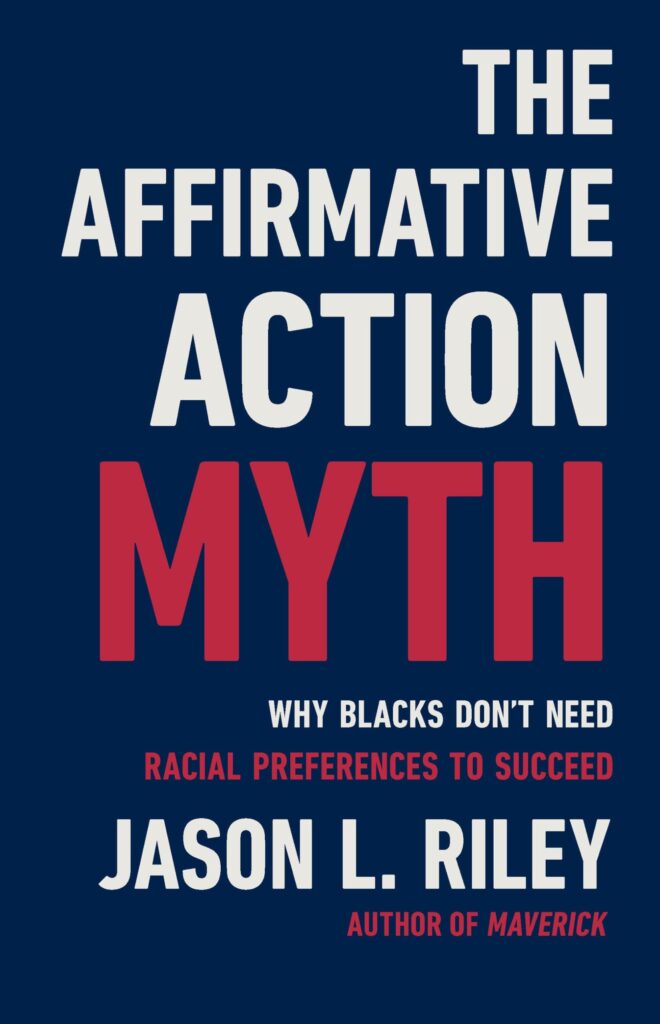JUNE 15, 2025 BY MARK PULLIAM
In addition to complying with the Constitution, color-blindness—equality before the law–is a more effective policy for promoting black advancement than the grievance culture of racial preferences. Meritocracy is the crucible for self-improvement.
This essay first appeared in Law & Liberty on June 9, 2025 (here). Thanks to Power Line, Real Clear Policy(here), Real Clear Books (here), and Paul Caron at Tax Prof Blog (here)!
History will judge harshly the United States’ prolonged vacillation over whether to honor the 14thAmendment’s command of color-blindness by government actors in the wake of Brown v. Board of Education, with the Supreme Court earning much of the blame. Brown vindicated Justice Harlan’s lonely dissent in Plessy v. Ferguson (1896), which proclaimed that “Our Constitution is color-blind.” Yet, it took the Justices 45 years—from Bakke in 1978 to SFFA v. Harvard in 2023–to reject the erroneous notion that racial discrimination in pursuit of “diversity” is acceptable under the equal protection clause of the 14thAmendment and federal civil rights laws. Granting “preferences” to favored racial groups is invidious discrimination—and therefore unconstitutional.
The hand-wringing and indecision reflected in Bakke, Grutter, Fisher I, and Fisher II are an embarrassment to the High Court, which finally reached the right result in the Harvard case. The Supreme Court’s earlier endorsement of the dubious “disparate impact” theory (concocted out of whole cloth by the EEOC in a clear misreading of Title VII of the Civil Rights Act of 1964) in Griggs v. Duke Power Co. (1971) remains uncorrected. Statistical imbalances–inevitable throughout history–are not the same as intentional discrimination, and it is ludicrous to suggest otherwise. Title VII explicitly declined to impose racial quotas. Section 703(j) of Title VII specifically states that employers are not required to grant preferential treatment to any individual to correct statistical imbalances in the workforce, and Democrat Hubert Humphrey, the Senate floor leader for Title VII, famously promised to eat the pages from the statute if Title VII were shown to authorize preferential treatment for any group. Like many promises made in Washington, D.C., this one was never carried out.

Wall Street Journal columnist Jason L. Riley’s excellent new book, The Affirmative Action Myth, is a thorough and balanced post-mortem of the Court’s bungled jurisprudence. (Riley even digresses briefly into the Court’s dreadful busing decisions, using University of Texas law professor Lino Graglia’s aptly-titled book Disaster by Decree as a guide.) The Affirmative Action Myth is really two books in one, as evidenced by the subtitle Why Blacks Don’t Need Racial Preferences to Succeed, because Riley argues that “affirmative action” (which he correctly points out is “synonymous with racial favoritism”) and other progressive innovations created in the name of “civil rights” have actually harmed blacks more than helping them. Decades of black upward mobility were upended by quota-driven affirmative action and welfare programs since the 1970s.
Thus, racial preferences are both improper and unnecessary. “The main purpose of this book,” Riley states, “is to explain how affirmative action has failed.” Riley deftly weaves together an accessible account of the Court’s tortuous decision-making and the failure of racial preferences to improve the status of affirmative action’s intended beneficiaries. Indeed, liberal largesse has made things worse for the black community. The Court’s affirmative action jurisprudence was infected by the same ideological flaw that has hijacked the civil rights movement in America. As Riley cogently explains, the continued advancement of the black community in America will be hampered until that error is recognized and rejected.
Like many aspects of the Great Society’s social engineering programs, and their successors, affirmative action was well intended. Beneficent motives, however, do not assure good results; as the saying goes, the road to hell is paved with good intentions. Affirmative action and other “civil rights” policies have been disastrous for blacks. The welfare state undermined the black middle class by encouraging fathers to abandon their families, incentivizing black women to have children out of wedlock, and resulting in the proliferation of single-parent households led by females. Family instability and in particular fatherless homes are strongly correlated with violent crime rates and other social pathologies
As Riley demonstrates, all of this was a reversal of positive economic and educational trends experienced by blacks between 1940 and 1960. Blacks were making remarkable gains even under “peak Jim Crow.” Riley doesn’t claim that racism didn’t (or doesn’t) exist, only that the legacy of LBJ’s welfare programs and the advent of affirmative action has had detrimental effects on blacks that are often overlooked in lieu of continued reliance on tired canards such as “systemic racism” and the presumed debility among blacks caused by the institution of slavery (which ended 160 years ago).
“Civil rights” is an industry in which many activists, scholars, bureaucrats, journalists, and organizations have a vested industry in perpetuating the myth of black victimization and helplessness. Riley argues (with extensive supporting footnotes) that “blacks have made faster progress when color blindness has been the policy objective.” Allowing equal treatment to be replaced by a regime of “oppression pedagogy” and identity politics, Riley suggests, is “one of our greatest tragedies.” Racial preferences “have been a hindrance rather than a boon for blacks,” he contends.
Riley makes a persuasive case. He reprises the work done by scholars such as Thomas Sowell, Walter Williams, Robert Woodson, Shelby Steele, John McWhorter, and Wilfred Reilly; as noted by Riley, much of the research on this topic by center-right academics tends to be done by blacks, possibly due to white scholars’ well-founded fear of repercussions. (If you doubt this, recall the pariah treatment accorded Charles Murray, Amy Wax, Ilya Shapiro, and others who refused to genuflect to the prevailing orthodoxy.) Riley also draws upon the work of Stephan and Abigal Thernstrom, Richard Sander and Stuart Taylor Jr., and many others. Readers may be familiar with some of this work, but Riley usefully summarizes it and supplements it with census data, lesser-known academic studies, and historical and biographical profiles such as Hidden Figures, the book and movie about pioneering black mathematicians who helped NASA’s space program in the 1960s.
Riley devotes a compelling chapter to debunking the efficacy of affirmative action, but his critique is not limited to the harmful consequences of racial preferences in higher education—in the form of the “mismatch” phenomenon and otherwise. Riley contends that “One tragic legacy of the affirmative action era is that the number of black college graduates is almost certainly lower today than it would have been without racial preferences that mismatch students with schools for diversity purposes.” Riley nimbly tackles the whole array of liberal shibboleths on race: critical race theory (and its leading proponents), reparations, the false narrative of the 1619 Project, “mass incarceration,” DEI, redlining, and more.
What these topics have in common is that they share the premise—one that Riley debunks as a myth—that blacks are helpless victims of an oppressively racist system and cannot improve their status without special preferences and favored treatment. A more descriptive (but less catchy) title for the book would be “The Racial Victimization Myth,” because Riley explores the many facets of the false race narrative peddled by the Left.
The patronizing paternalism of the prevailing narrative harms blacks, Riley argues, because it instills a mentality of victimhood that fuels grievance and undermines effort and personal responsibility on the part of blacks. If the game is rigged due to “white supremacy,” and if “systemic racism” determines one’s fate, why bother to work hard, exercise self-restraint, adopt good habits (in the form of so-called “bourgeois values”), and so forth? This theme resonates powerfully throughout the book. History teaches that assimilation into the mainstream culture leads to upward mobility, and the rigors and discipline of competition—the bedrock of meritocracy—foster a culture of striving instead of excuses, resentment, and despair. Treating blacks as helpless victims discourages them from devoting themselves to achieving success through self-improvement.
One of Riley’s most effective rhetorical devices is the juxtaposition of attitudes about black self-reliance and personal responsibility from earlier eras and the contrived ideology of “anti-racism,” as exemplified by the writings of Ibram X. Kendi, Ta-Nehisi Coates, and Robin DiAngelo. Proponents of critical race theory (which Riley says “amounts to little more than a fancy justification for racial favoritism”) embrace what Riley calls “racial essentialism”: the notion that “anti-black bias in America is systemic…and must be eliminated root and branch before any significant narrowing of racial disparities can take place.” Not only is this premise contradicted by the well-documented progress blacks made in the first two-thirds of the 20th century, even under Jim Crow, it is also contrary to the sentiments expressed by early civil rights leaders such as Booker T. Washington, W.E.B. Du Bois, Martin Luther King Jr., and even Malcolm X, all of whom emphasized the importance of self-reliance, hard work, and individual responsibility as indispensable to upward mobility. Riley notes that “Coates is waiting on white people to rescue black people. [Frederick] Douglass understood that black people must save themselves.”
This concept, once dubbed the “politics of respectability,” called upon blacks to adopt constructive manners, morals, and attitudes to achieve social and economic advancement, even in the face of discrimination. Other minority ethnic and racial groups, including Irish, Chinese, Japanese, and Jewish immigrants, overcame prejudice in America by adopting productive cultural habits—assimilation, in other words. Riley points out that this approach is anathema to modern-day civil rights activists, who scorn respectability politics as “ineffective and a waste of time. Studious black youngsters and other black people who adopt middle-class speech, dress, and behavior are accused of racial betrayal, or ‘acting white.’”
Critical race theory holds that “racism is mainly if not entirely to blame for black-white gaps in everything from income to incarceration to standardized test scores.” Riley strongly disagrees. Absolving blacks of any responsibility for improving their status in American society conveniently blames “white supremacy” for every aspect of dysfunctional black culture and encourages blacks to be dependent on favors bestowed by the welfare state. Riley states that affirmative action creates the “impression that black people are charity cases dependent on government programs.” Critics of affirmative action and statist policies sometimes compare the retrogression of black advancement since the Great Society as a “return to the plantation.”
Even mild suggestions for black self-improvement by sympathetic figures such as Barack Obama are rebuked by black leaders as “blaming the victim” and “talking down to black people.” Riley laments that “Discouraging acculturation and assimilation in the name of racial solidarity is self-defeating.” The rejection of individual responsibility and the tendency to blame “whiteness” for all racial disparities have sabotaged the upward mobility and progress that blacks enjoyed prior to the civil rights era. Liberals understandably don’t want to acknowledge the body of data that Riley convincingly marshals. Hard work, thrift, sobriety, respect for authority, the nuclear family, recognizing the important of education, and deferring gratification are not manifestations of white supremacy, but essential ingredients for success.
It is truly astounding to see how condescending leftist intellectuals deny blacks any moral agency, and encourage them to wallow in grievance and victimhood. Riley observes that “black politicians and activists have a vested interest in a narrative that accentuates black suffering.” Victims require saviors, and those promising to deliver salvation are often rewarded with status, money, and influence.
The Supreme Court, left-wing scholars, and self-interested activists are not the only villains in The Affirmative Action Myth. Riley exposes the activist role of the Equal Employment Opportunity Commission in “turn[ing] Title VII on its head,” and points out that Presidents from both political parties have muddied the waters by issuing executive orders mandating quotas (as LBJ did with federal contractors in Executive Order 11246) or supporting the expansion of the Great Society welfare programs (as Richard Nixon did). There are few “heroes” in Riley’s account, although Justice Clarence Thomas—a longtime critic of affirmative action—comes close.

Riley does not deny the existence of racism in America, but he insists that it doesn’t explain the disparities within the black community (such as West Indian blacks versus African-American blacks) or the retrogression among blacks since the 1960s: “The elimination of white racism, however desirable then and now, is not a prerequisite for black socio-economic advancement.”
Riley’s sobering concluding chapter is chock full of hard truths—and not for the faint of heart:
One reason antisocial behaviors [by blacks] became more common in the post-1960s era is because they became more tolerated and more lavishly subsidized by the government…. Low-income blacks began to adopt counterproductive attitudes and habits that previous generations had rejected and strived to eradicate. Even more tragically, academics began to intellectualize this degeneracy instead of calling it out for what it is.
Providing grisly details, Riley condemns the hip-hop culture and gangsta rap: “Too many young people have come to equate self-destructive behavior with black authenticity.” Put in economic terms, “Government programs are no substitute for the development of human capital.”
Sadly, despite the proven failure of the victimization narrative, and its baleful consequences so readily apparent in our inner cities, the proponents of this model “have perhaps never been more celebrated in the academy and the media than they are today.” Affirmative action has never enjoyed popular support, and has now been declared unconstitutional and illegal. That it still carries sway in the influential spheres of academia and the media, Riley laments, “ought to be of deep concern to anyone who cares about the future of the black underclass.” Indeed.
The Affirmative Action Myth is a timely and well-written book that contains an abundance of common sense, solid arguments, and carefully-researched historical data. One can only hope that it is widely read and provokes a long-overdue change in direction in the area of civil rights and race relations. Sixty years of failed policies is enough.
Mark Pullman is a retired lawyer from California , now living in Virginia. He has his own blog ‘Misrule By Law ‘ and is associated with The Law and Liberty organization.
Click this link for the original source of this article.
Author: brianpeckford
This content is courtesy of, and owned and copyrighted by, https://peckford42.wordpress.com and its author. This content is made available by use of the public RSS feed offered by the host site and is used for educational purposes only. If you are the author or represent the host site and would like this content removed now and in the future, please contact USSANews.com using the email address in the Contact page found in the website menu.








